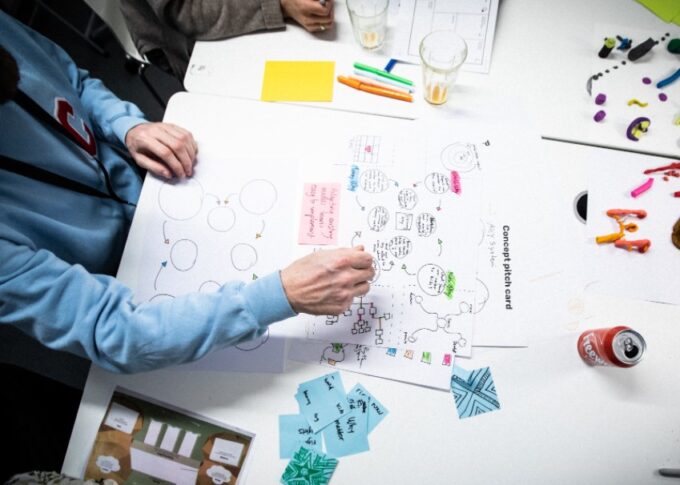Every product on the market meets certain human needs. The product was created as a result of work, and every consumer wants to get the best possible product for as little money as possible. Customers are interested in certain products because of the package of profits that they will have after consuming them. In order for a product to be on the market and take its place there, it is necessary to meet the needs and requirements of buyers.
Customers are always looking for a product that will meet most of their expectations. They analyze the product through its performance and quality. Client satisfaction is the best advertisement for a product, and if it is particularly good or particularly bad, the customer will very quickly inform other potential buyers about the quality of the product.
One product consists of quality, style, brand, packaging and many other characteristics. Everything is taken into account with only one goal: to meet customer expectations.
Many people dream of starting their own business and realizing their business ideas. However, just a few of them really dare to take action on this issue.
It is not an encouraging fact that of all the new products that are launched on the market, only 20% of them manage to survive. In order to launch a new product on the market, a long and thorough strategy is necessary. Planning ahead and anticipating are conditions that you need to possess to have the opportunity to earn from a new product.
With the help of www.inventhelp.com we have selected for you the following list of items that need to be followed if you want to understand better the process of developing a new product on the market.
1. Creating an idea

The best and most effective ideas come from needs. Listen to your own, or customers’ needs and they will lead you to great ideas. The idea can refer to the creation of a completely new product that has not existed on the market so far, and we call this process an innovation.
The idea can build on an existing product by upgrading it or making add-ons to use it more efficiently. Modern technology can help you a lot in this process. Many corporations have a whole team of people, management, who deal exclusively with identifying new types of products in the market. Surely, the team would even work efficiently with the use of innovation management software.
2. Selection
As mentioned earlier, not all ideas become new products. Many ideas remain just that- ideas themselves. In order for an idea to cross the path leading to a product, it would have to meet certain conditions. This primarily refers to its financial sustainability, potential to really be on the market and compatibility.
The ultimate goal of this segment is not only the production and sale of products but to choose a really good idea. In that sense, the selection of ideas and the selection of those that will really be realized is not a simple process. It involves patience, analysis and vision.
3. Design

If we had an idea, and it went through selection and analysis and met all the criteria, it’s time to dedicate ourselves to design. If you think that the design of a product is easy to conceive and that it is enough to have a sense of aesthetics to create it, you are very much wrong. Product design involves a set of criteria that must be met.
To begin with, it is necessary to do mini research of popular trend brands of similar products and analyze what design would be most interesting to the customer. When we have a framework idea it is necessary to balance between cost, quality and performance. All design ideas, as well as calculations, are transferred to paper and a preliminary design is created. As a result, we should have a product design that is competitive in the market and not too demanding to produce.
4. Prototype
Every big company creates a prototype of a product after it has been designed. A prototype can take many different forms, and its purpose is to give us a final check and analysis of the product itself. Through the prototype, we can see the flaws or shortcomings of our product and we are still in time to improve them. Therefore, it would be good to make as many prototypes as possible so that the testing in the next phase would be complete.
5. Testing

As already mentioned, testing the prototype is of great importance for this whole process. Such tests usually last from 6 months to two years. Very often, testing is limited to a smaller geographical framework to make it easier to control testing.
Through testing of marketing and technological performance, we get data on does and to what extent customers accept the product. This is both qualitative and quantitative data. Everything we collected as feedback during the testing phase gives us guidelines to move on to the next phase.
6. Final product design
Upon completion of testing, certain changes, if there are any, may be applied in the final product design. If there were more changes than expected, the testing phase should be repeated. The final product design is the final process before the product is manufactured and placed on the market.
7. Commercial

Although the product has passed all the tests and has already left the production facility, we need to think carefully before publishing it to the audience. A product that is expected to be a great success on the market is placed at a certain time and through certain and well-planned marketing formats.
Detailed analysis must predict the time when a product should appear on the market, but also devise a way in which it will reach the customer. Each product has its own timing, so be patient and wait for its glory. When we look at such arranged tips about product development, things look quite simple, simpler than they really are.
This process does not always go in the same order, and depending on the type of product and financial possibilities, some phases can be skipped. What is very important is that all actors, including people from production, are involved in this whole process. Everyone with their ideas and experience should point out the difficulties and try to save time and money.









